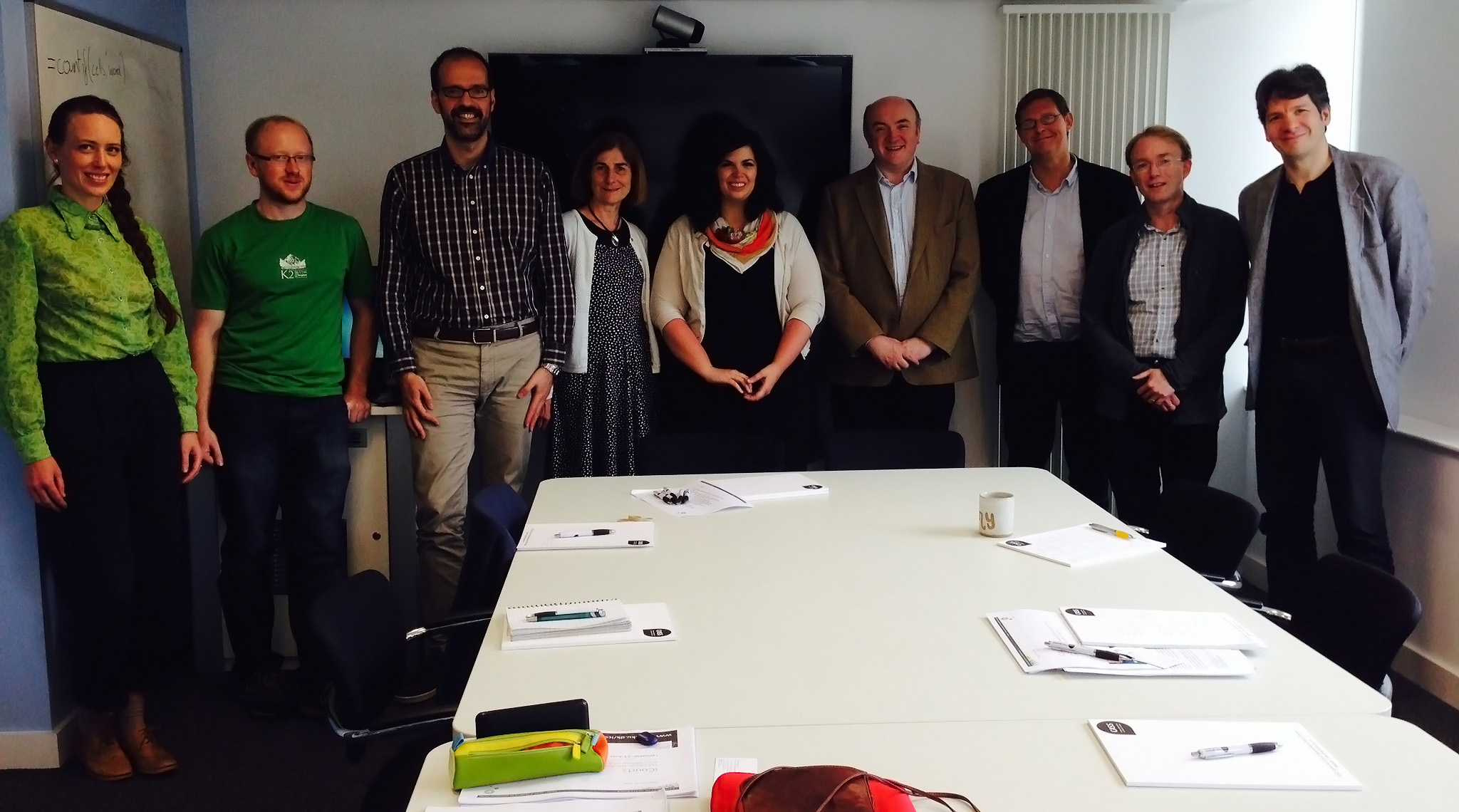Earlier this year, a formal collaboration between iCourts and CASS was signed based on our centres’ joint interest in the corpus-based investigation of language in the context of law. We are motivated to analyse legal data linguistically, because law is practiced in language, legal judgements are texts, legal arguments are phrases in texts, and legal concepts are expressed in words. One primary argument against analysing legal language from a linguistic perspective is that the data tend to be extremely formulaic and objective. However, findings from our collaborative analyses have shown that legal language shows elements of both fixedness and variation. Both sorts of patterns were exposed using corpus-based critical approaches to language.

Sigrun Larsen (Dept. of Law, Lancaster University), Matt Fisher (Tripod Software), Ioannis Panagis (iCourts, University of Copenhagen), Anne Lise Kjær (iCourts, University of Copenhagen), Amanda Potts (CASS, Lancaster University), Tony McEnery (CASS, Lancaster University), Henrik Stampe Lund (iCourts, University of Copenhagen), Paul Rayson (CASS, Lancaster University), Laurence Anthony (CASS visitor, Waseda University)
On our first collaborative project, “Decoding the rule of law: Corpus-based discourse analysis of the construction of achievements of the International Criminal Tribunal for the Former Yugoslavia (ICTY)”, I serve as P.I., collaborating with C.I. Anne Lise Kjær of iCourts. This month, I traveled to Copenhagen to spend 1.5 intensive weeks working at the University of Copenhagen. I arrived prepared to work with two corpora that had previously been collected and cleansed with the help of Matt Fisher (Tripod) and Ioannis Panagis (iCourts): 1) All of the trials and appeals published thus far by the ICTY (10.5 million words); and 2) Annual reports published by the ICTY from 1994-2013 (425,000 words).
In the use of frequency lists, (contrastive) collocation analysis, n-gram description, and key semantic domain analysis, we have demonstrated the ways in which legal language remains rigid and fixed, and also described instances in which variation occurs. Because trials (and, to a lesser extent, appeals) are intended to be self-contained documents, we have also been able to trace problematisation in variations of legal language, which led to confusion in the court, and increased time and money spent in search of justice.
Analysis on the first phase of our project is now complete, and initial results are being disseminated. I presented findings with my collaborator Anne Lise Kjær last week at the fifth international conference for Critical Approaches to Discourse Analysis across Disciplines (CADAAD) at ELTE (Loránd Eötvös University) in Budapest, Hungary. A paper outlining our recommendations for corpus-based critical analyses of legal language and featuring detailed findings of this initial study is in the final stages of preparation, and will be available next year.
